In art and society photography fulfils an important role as a critical tool. The Western world accepted this role already in the seventies, while dealing with socio-political issues on the one hand, and aesthetic, formalistic questions on the other. With the development of the post - modernist criticism, this dimension of photography has acquired further significance. In Israel this function remained mostly in the hands of journalistic photography or in the field of the plastic arts, for example in activities carried out by artists outside of the museum and documented by the camera [1].
The artistic establishment in Israel did not encourage the development of this trend, with the exception of exhibitions such as Artist and Society in Israel Art, 1948 - 1978 [2]. Until the late seventies, group exhibitions of photography in Israel [3], provided a naive view of reality and avoided dealing with subjects of a critical and avant-garde nature. The photography departments in art schools mainly fostered aesthetic thought and touched on the pictorial qualities of the medium. It was only in the late eighties that the critical power of photography began finding expression in the work of Israeli photographers, exhibited mainly outside the framework of established exhibition spaces [4].
The exhibition The Range of Realism wishes to throw light on the critical dimension of Israeli photography - expressed directly or conceptually through the treatment of sociological, political, ecological, urban and aesthetic issues. In order to highlight this aspect of the works, an alternative collection and installation model to the modernistic one has been preferred. Here the accented division according to styles, themes, etc. is absent. The collecting of the works and their installation has been inspired by the methods practised until the nineteenth century, by which works of art were selected and hung in a non-hierarchic classification and organization, covering the length of the wall [5], and by Andre Malreax’ Utopian model Museum without Walls [6]. The works in the exhibition were selected from the Tel Aviv Museum of Art Collection and from private collections, and are mostly from the years 1990 - 1993. Several are from the eighties. | | | | Notes | | | 1. Some outstanding examples are Pinchas Cohen Gan, Touching the Border, 1974; To be a Refugee, Jericho Refugee Camp, 1974; Micha Ullman, Earth-Changing, Metser-Messer, 1972; Michal Na’aman, The Eyes of the State, 1974.
2.Tel Aviv Museum. 1978, Curator: Sara Breitberg.
3.For example, Situation - Israeli Photographers ’74. The Israel Museum, Jerusalem, 1974, Curators: Micha Bar-Am, Marc Scheps.
4. For example, Picture of a Situation, Wrap gallery, Tel Aviv 1988, Curators: Eitan Hillel, David Reeb; Photographers Against the Iron Fist Policy, Camera Obscura Gallery, Tel Aviv, 1988, conceived and organized by Yehoshua Glotman, Boaz Tal, Yael Lotan; Across the Line, Press Photographers in Israel document the Palestinian Uprising, Ami Steinitz Gallery, Tel Aviv, January 1992, Curator: Ami Steinitz; Olive Green, Bograshov Gallery, Tel Aviv, February 1992: Curator Ariella Azoulay.
5. The first impressionist exhibition (1874), for example, held in Nadar’s old studio at Boulevard des Capucines, challenged, among other things, the conventional “Victorian’method of display (several rows, one above the other, of closely hung pictures). The works were hung alphabetically in no more than two horizontal rows, the larger works placed in the upper level, with the beginning letter of the arrangement determined by draw. See Martha Ward, “Impressionist Installations and Private Exhibitions.” Art Bulletin, New York, December 1991, p. 603.
6. See Andre Malraux, Museum Without Walls, The Voices of Silence, Paladin, St. Albans, 1974.
| | |
| | | | 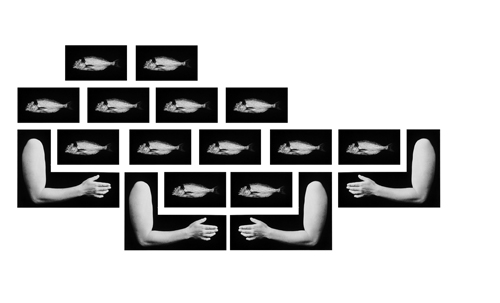 | | Galia Gur-Zeev, Archetype, 1993, Courtesy of the photographer | | | 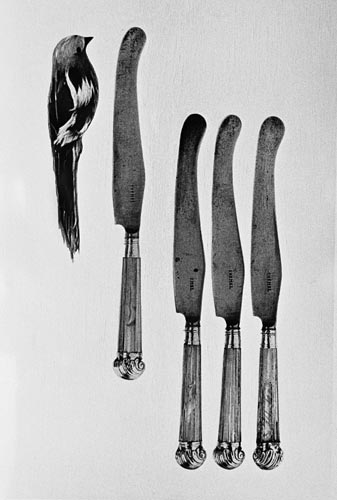 | | Shosh Kormosh, Untitled, 1992, Courtesy of Gordon Gallery | | | 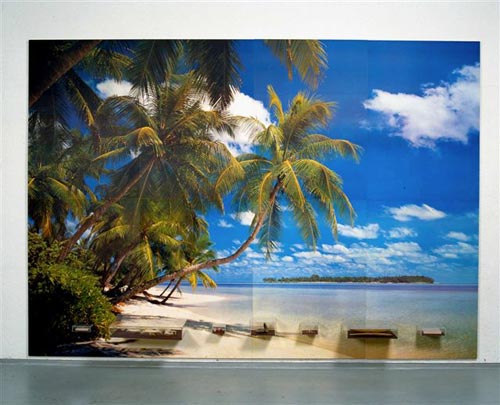 | | Ariane Littman, Invitation to a Voyage, 1993, Courtesy of the artist | | | 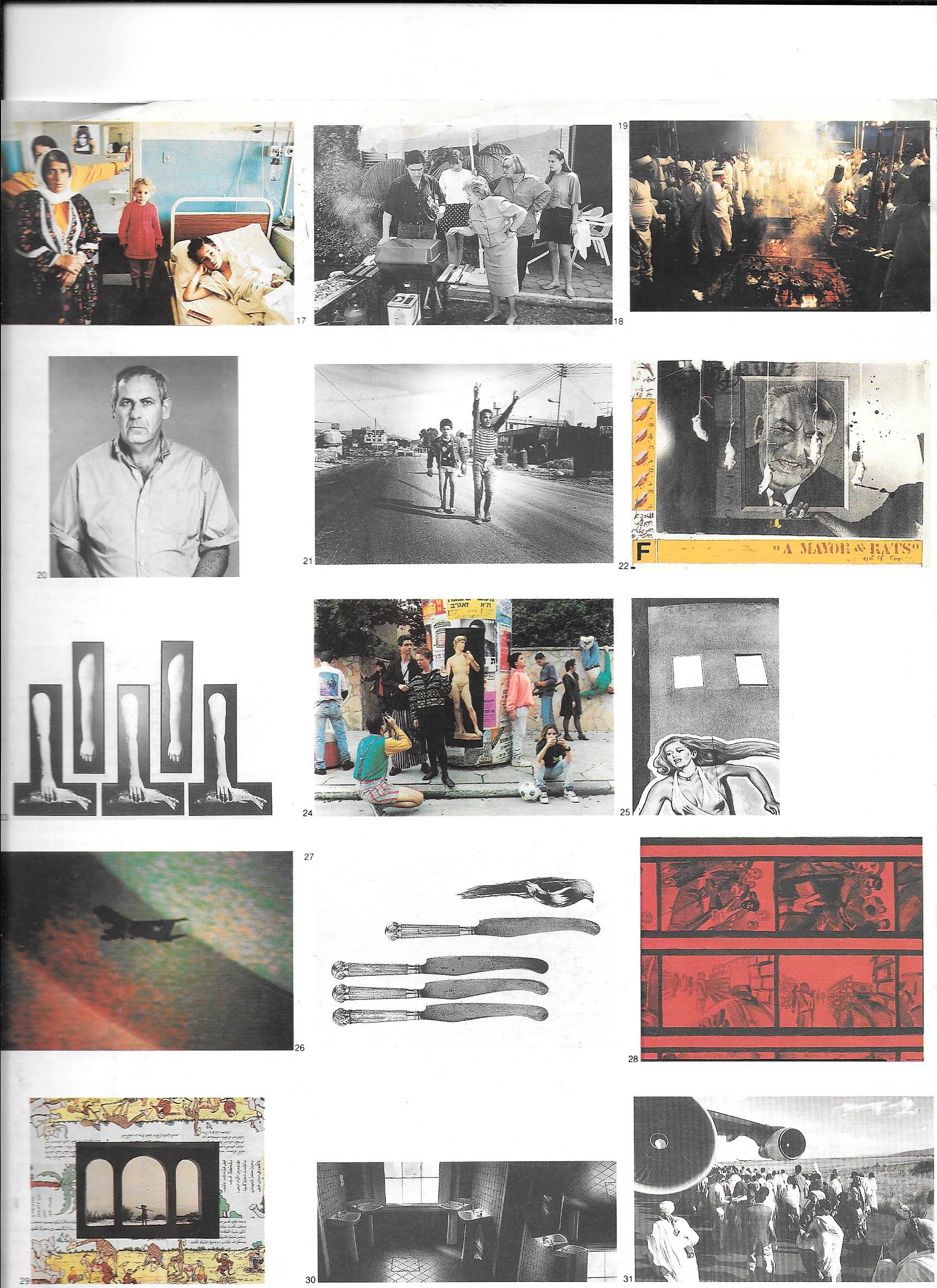 | | Leaflet cver | | | 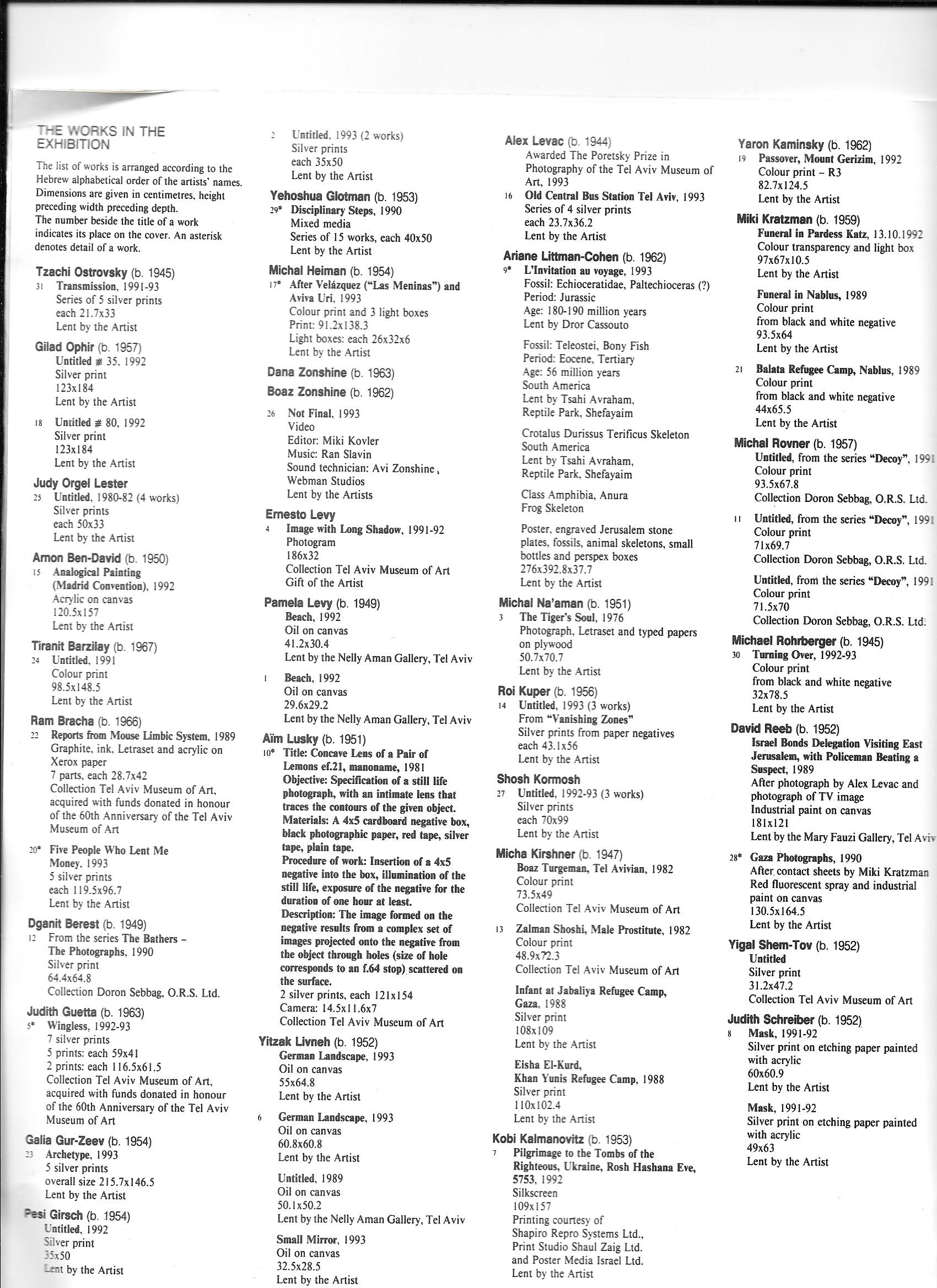 | | Artists in the exhibition | | |
|